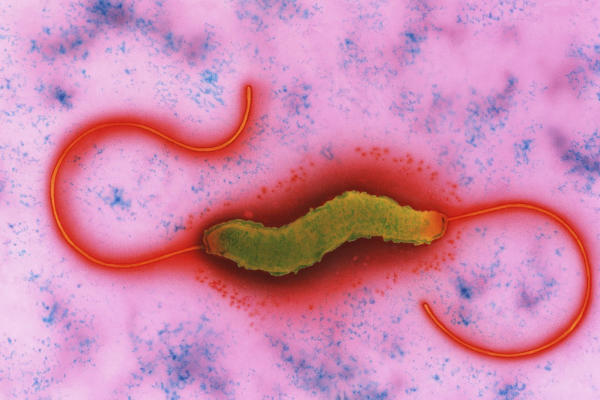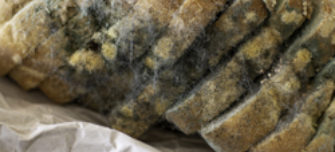Food poisoning

The number of cases of food-borne illness remains high with an estimated 1 million people in the UK becoming infected each year. The symptoms, including vomiting, diarrhoea, abdominal pain and fever, are not only unpleasant; they also cost an estimated £1.5 billion a year in lost working days and medical care. Most food-borne illness is preventable.
Preventing food poisoning is the responsibility of everyone in the chain from the plough to the plate. This includes farmers and growers, manufacturers, shops, caterers and consumers. The activities of food suppliers are governed by UK and EU food safety law. In the home correct hygiene, cooking and storage must be practised.
Some of the bacteria that can cause food poisoning
| Name of bacterium | Original source | Risky foods | Time to develop | Symptoms |
| Bacillus cereus | soil | cooked rice and pasta; meat products; vegetables | 1–5 hours | nausea, sickness and diarrhoea |
| Campylobacter jejuni | raw meat and poultry | undercooked meat and poultry; raw milk and cross-contaminated food | 3–5 days of eating infected food | fever, severe pain and diarrhoea |
| Clostridium botulinum (very rare) | soil | faulty processed canned meat and vegetables; cured meat and raw fish | 1–7 days | affects vision, causes paralysis and can be fatal |
| Clostridium perfringens | the environment | large joints of meat; reheated gravies | 8–24 hours | nausea, pain and diarrhoea |
| Escherichia coli – E. coli O157:H7 is a very nasty strain and it can be fatal |
the gut of all humans and animals | contaminated water, milk, inadequately cooked meat, cross-contaminated foods | 3–4 days | inflammation, sickness and diarrhoea |
| Listeria monocytogenes | everywhere | soft cheeses, paté, pre-packed salad; cook-chill products | varies | fever, headache, septicaemia and meningitis |
| Salmonella | gut of birds and mammals including humans - spread by faeces into water and food | poultry, eggs and raw egg products, vegetables | 6–48 hours | diarrhoea, sickness and headaches |
| Staphylococcus aureus | the skin and noses of animals and humans | cured meat; milk products; unrefrigerated, handled foods | 2–6 hours | sickness, pain and sometimes diarrhoea |
An in-depth look at a bacterium that causes food poisoning
Campylobacter
The bacterium Campylobacter is part of the normal flora living in the intestines of healthy chickens and other animals. At the factory when a chicken is killed and gutted, the contents of its intestines, including the Campylobacter, could come into contact with the bird’s skin. This means the raw chicken meat could become contaminated with Campylobacter.
How do you make sure chicken is safe to eat?
Campylobacter is sensitive to heat so cooking the chicken properly will kill it and make the meat safe to eat. If the chicken is served undercooked, then the Campylobacter could survive and be eaten along with the chicken. After the bacteria have been swallowed they multiply inside the person’s intestine and cause the illness known as food poisoning. It takes about 3 days for the symptoms of diarrhoea, stomach cramps and fever to develop. The illness lasts between 2 days and a week.
Cross-contamination is the transfer of microbes from raw foods to prepared and cooked foods, it can take place by:
- raw food touching or splashing on cooked food;
- raw food touching equipment or surfaces that are then used for cooked food;
- or people touching raw food with their hands and then handling cooked food.
To prevent cross-contamination it is important to maintain good kitchen hygiene such as storing cooked and raw food separately and good personal hygiene by washing hands correctly and tying hair back.
-
Spoilers
When microbes grow on food it soon beings to smell nasty, look slimy, change colour, taste awful or even get a furry coating and is inedible. Find out what’s causing this.
-
Producers
Microbes ferment sugar to make energy for themselves – luckily for us food like bread and yoghurt can be made by microbial fermentations.




